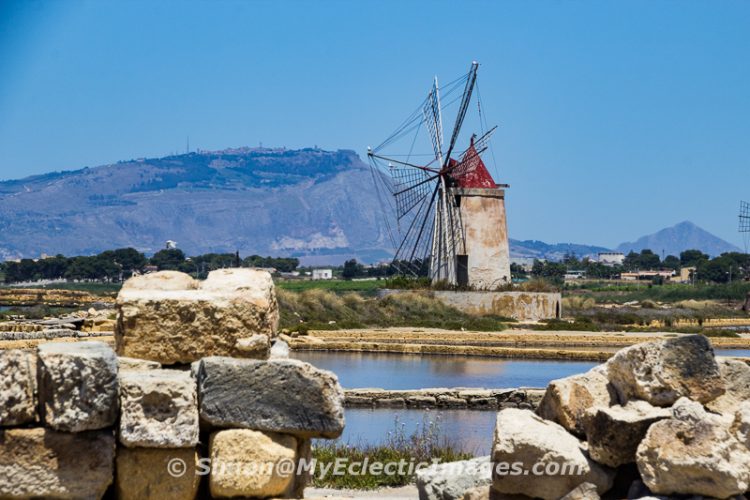You’ll Never Look at Your Shaker or Grinder the Same Way Again.
It was a hard lump, with a rough, irregular surface. Holding it in my hand, it was difficult to imagine this strange object could have anything to do with food preservation, flavor enhancement or high blood pressure. But the age-old process that turns such lumps into the stuff of which salty caramel brownies are made was a true WOW.
Sicily is one of these places that tends to get a bad rap. So forget about the Godfather, kneecapping and menacing-looking hulks with long cigars, and think beautiful scenery, warm, friendly people and all manner of fresh food nurtured to perfection by generous amounts of sun and rain.
One of the many glorious edibles to be found in Sicily is simple, yet essential, sea salt.
Located on the western part of the island, between Trapani and Marsala are lines of windmills, a salt pond and a charming multi-media museum. Situated in a converted windmill and warehouse, the museum offers visitors a view into how sea salt is produced at the mainland location, as well as on several islands just a short boat ride away.
Through the museum’s exhibits, plus a short film (available in your language of choice) you take a fascinating journey into the natural way in which salt is formed. You can see how it is extracted using traditional tools and methods, and how it becomes the sea salt we know and love.
Most of the exhibits were behind glass, but I was still able to handle a couple of the tools, and marvel at the fact that all the work of extracting the salt was still done by hand.
The salt-making process involves the channelling of sea water into ponds, where the generous Sicilian sun goes to work evaporating it. The salt is then harvested by hand and dried in large piles under terra-cotta tiles.
The restored windmills are still used today to pump water and grind the salt. The windmill housing the museum is an excellent and entertaining source of information, salt tasting and, of course, provides the opportunity to purchase plain and flavored salts.
This is a visit that should not be rushed. Even if you don’t have enough time to visit one of the islands, the scenery is nothing short of spectacular. If you are lucky, you can satisfy your birdwatching yen by observing flocks of migratory birds such as herons and flamingoes on their flight path to Africa.
Sometimes, the things we take for granted really shouldn’t be. The next time I reach for my salt grinder, I’ll remember how much work has gone into its contents, and think, “WOW.”
Information on the salt pond and can be found on the museum’s official website.









This is certainly a place I’d love to visit. Lovely to meet you Penny!
In our world of automation, I’m always surprised by massive jobs still being done by hand. Hard work.
Thanks for sharing this Penny!